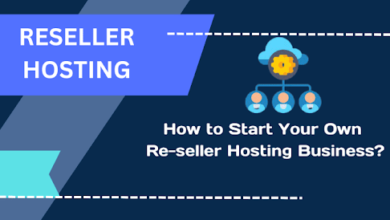Email Warmup Strategies, Processes, and Effective Campaigns

In the fast-paced world of digital marketing, mastering the art of email warmup is crucial for optimal campaign success.
As businesses strive to reach their target audience effectively, understanding the intricacies of email warmup strategies and processes becomes paramount.
This comprehensive guide reveals the secrets to executing effective email warmup campaigns that not only enhance deliverability but also foster stronger connections with subscribers.
From demystifying the concept of email warmup to providing actionable insights into crafting compelling campaigns, this article is your go-to resource for navigating the dynamic landscape of email marketing.
Explore proven techniques, stay ahead of the curve, and elevate your email campaigns to new heights with our expert insights and strategies.
Understand Warmup Email Campaigns
To utilize the full potential of email marketing, understanding the intricacies of warmup email campaigns is essential.
Email warmup is a systematic process designed to establish trust with Internet Service Providers (ISPs) and ensure optimal deliverability. This critical phase involves gradually increasing email sending volumes and engagement levels to signal to ISPs that your emails are legitimate and solicited.
Begin by comprehending the importance of sender reputation and how it directly influences inbox placement. A well-executed warmup not only safeguards against spam filters but also enhances the likelihood of your emails reaching the intended audience.
Learn the nuances of crafting a strategic warmup plan tailored to your unique needs, including segmenting your audience, gradually escalating email volumes, and monitoring key metrics.
By grasping the nuances of warmup email campaigns, marketers can proactively shape a positive sender reputation, paving the way for successful and impactful email marketing campaigns.
The Email Warm-up Processes
Embarking on an email warm-up journey involves a strategic orchestration of processes to establish credibility, enhance deliverability, and optimize engagement.
Start with meticulous planning, segmenting your audience is a key step to tailor your warm-up approach based on subscriber behavior and characteristics.
The gradual ramp-up of email volume is a pivotal process, allowing senders to build trust with Internet Service Providers (ISPs) by showcasing responsible and legitimate email practices.
Monitor engagement metrics, such as open and click-through rates, is an ongoing process that provides valuable insights into the effectiveness of your warm-up strategy.
Incorporate authentication protocols, such as SPF and DKIM, adds an extra layer of credibility to your emails, solidify your reputation as a trustworthy sender.
The iterative nature of the warm-up process enables marketers to adapt and optimize continually, ensuring that their email campaigns not only land in the coveted inbox but also resonate with their audience, laying the groundwork for long-term email marketing success.
Explore Email Warm-up Methods
Follow given email warm-up necessitates a nuanced exploration of effective methods to establish sender credibility and enhance deliverability.
- One pivotal method involves starting with a low volume of emails and gradually increasing the sending frequency, allowing email service providers to recognize and trust the legitimacy of your communication.
- Segmentation is another important method, tailoring your warm-up approach based on distinct audience characteristics. By understanding subscriber behavior and preferences, marketers can craft personalized strategies, fostering engagement from the outset.
- Monitor engagement metrics like open rates, click-through rates, and subscriber responses provides invaluable insights into the effectiveness of your warm-up methods.
- SPF and DKIM, is a proactive approach to fortify your sender reputation.
With these diverse methods, marketers can simplify the complexities of email warm-up, laying the groundwork for successful campaigns and sustained positive interactions with both subscribers and email service providers.
Understand technology behind the Email Warm-up Proces
The technology behind the email warm-up process is a sophisticated combination of authentication protocols, monitoring tools, and strategic planning.
Authentication protocols like Sender Policy Framework (SPF) and DomainKeys Identified Mail (DKIM) are integral components.
SPF validates that the sending server is authorized to send emails on behalf of the domain, while DKIM ensures the integrity of the message by attaching a digital signature.
Monitoring tools play a crucial role, allowing marketers to track key metrics such as open rates, click-through rates, and engagement levels. These tools provide real-time feedback, enabling adaptive adjustments to the warm-up strategy based on audience responses.
Behind the scenes, ISPs employ complex algorithms to assess sender reputation, considering factors like email volume, engagement rates, and adherence to authentication standards. Strategic planning involves orchestrating a gradual increase in email volume over time, signaling to ISPs the sender’s commitment to responsible and legitimate email practices.
Frequently Asked Questions
- What is the purpose of email warm-up?
Email warm-up is designed to establish sender credibility, enhance deliverability, and optimize engagement by gradually increasing email sending volumes and building trust with Internet Service Providers (ISPs).
- How does segmentation play a role in email warm-up?
Segmentation involves categorizing the audience based on characteristics, allowing marketers to tailor their warm-up strategy for different subscriber groups, optimizing relevance and engagement.
- What authentication protocols are involved in the email warm-up process?
Authentication protocols such as Sender Policy Framework (SPF) and DomainKeys Identified Mail (DKIM) are crucial. SPF validates sending server authorization, while DKIM ensures message integrity with a digital signature.
- What metrics should be monitored during email warm-up?
Key metrics include open rates, click-through rates, and subscriber responses. Monitoring these metrics provides real-time insights for adapting and optimizing the warm-up strategy.
- How does content contribute to effective warm-up email campaigns?
Engaging, relevant, and valuable content in initial emails fosters positive interactions, contributing to the success of warm-up campaigns.
- Why is a gradual increase in email volume important in warm-up campaigns?
Gradual escalation signals to ISPs the legitimacy of email outreach, preventing emails from being flagged as spam and building a positive sender reputation.
- Can you explain the role of monitoring tools in email warm-up?
Monitoring tools track metrics, providing real-time feedback on campaign performance. This information enables marketers to make adaptive adjustments to optimize warm-up strategies.
- How do ISPs assess sender reputation in the warm-up process?
ISPs use complex algorithms, considering factors like email volume, engagement rates, and adherence to authentication standards to evaluate sender reputation.
- What is the significance of SPF and DKIM in email warm-up?
SPF and DKIM add an extra layer of credibility to emails by validating sender authorization and ensuring message integrity through digital signatures.
- Why is it essential to continually review and refine the warm-up strategy?
Regular review and refinement allow marketers to adapt to evolving audience behavior and industry trends, ensuring the ongoing effectiveness of email warm-up campaigns.





